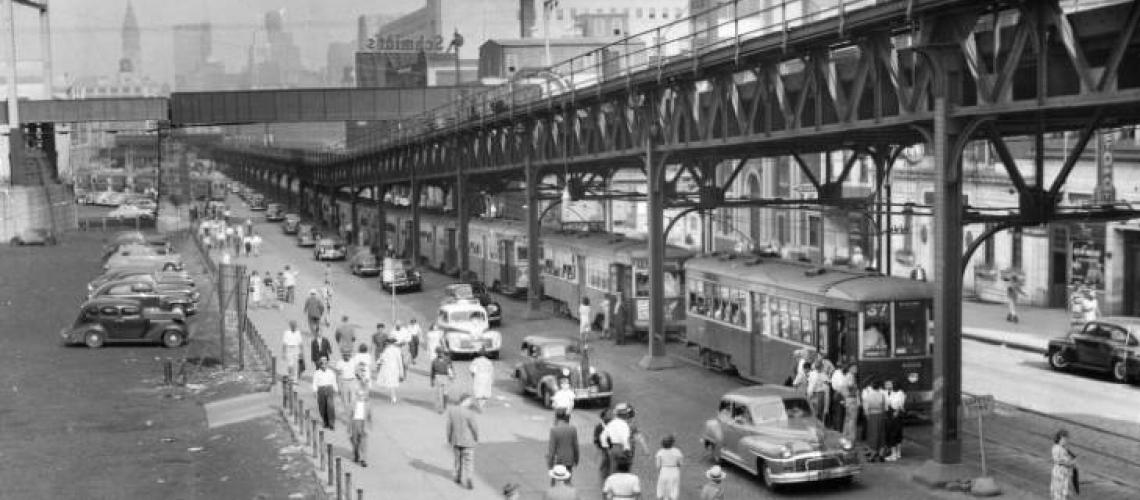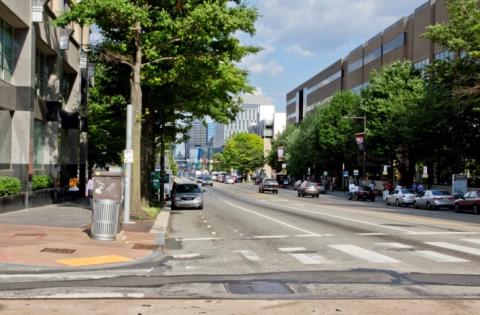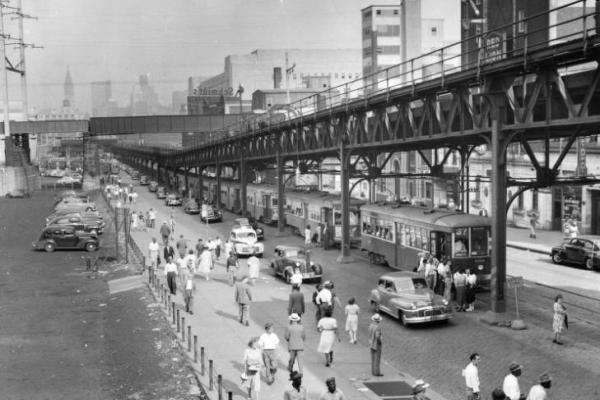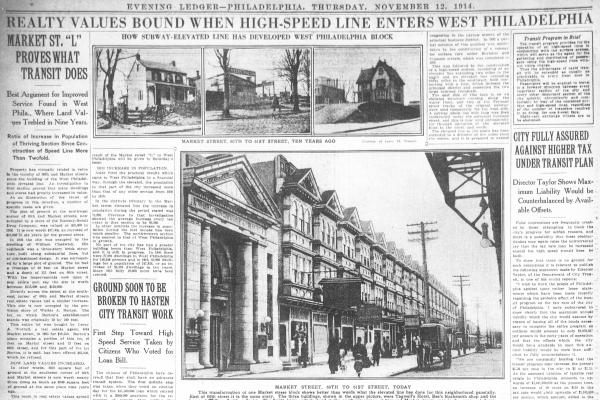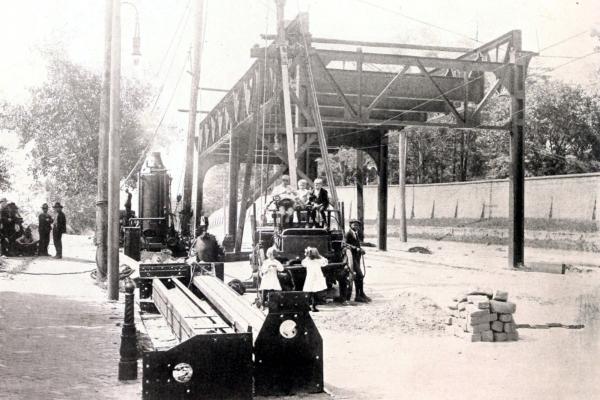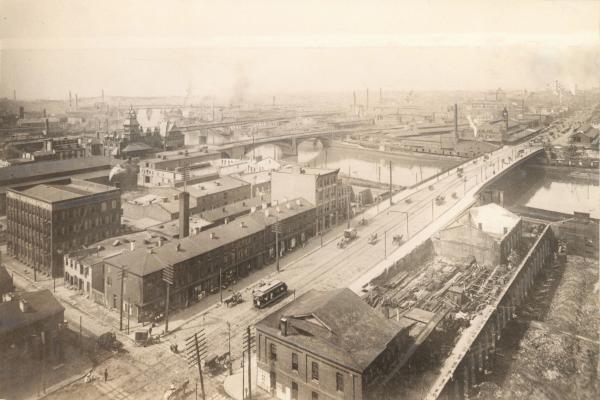Putting the Market Street Elevated Underground
Between 1947 and 1955, the Philadelphia Transit Company completed a subway tunnel for the Market Street Elevated west of the Schuylkill and took down the El between 32nd and 45th streets.
Attributing deteriorating housing and other harmful environmental impacts to the Market Street Elevated, city officials authorized construction of a subway tunnel that reached 32nd Street in the 1920s. Halted during the Great Depression and World War II, construction resumed between 1947 and 1955, when the quasi-public Philadelphia Transit Company extended the tunnel to 45th Street. Here the trains rose from a portal to rejoin the El, which remained intact above Market Street between 46th Street and the line’s terminus at 69th Street. Demolition of the El above the subway tunnel to 45th Street was completed in 1956.
From the outset the Market Street El was problematic for the people who lived in the Market Street corridor. “Once completed,” writes Margaret Mash, “this unsightly structure overshadowed its surroundings and became the dominant feature of the environment.”[1] “Deterioration was built into the very construction of elevated rapid transit,” noted other commentators.[2] In the shadow of the El, developers built “cheap and profitable two-story, two-family rentals,” marking the corridor as “aesthetically unappealing.”[3]
Hailed as “an epochal engineering feat” in 1907, the El would prove to be “a major traffic hindrance and an eyesore.” In the 1920s city planners decided to dismantle the El and put the railway system underground. Two parts of the plan were completed by 1933: 1) construction of a tunnel that followed the line of Market Street under the Schuylkill River between 23rd and 32nd streets, and 2) replacement of the old Market Street Bridge with a new bridge for automobiles. At this point the city’s Depression-era financial woes brought the project to a halt. Also postponed indefinitely was a plan to demolish the Philadelphia Rapid Transit Company’s Schuylkill River Bridge. Throughout the Depression era and World War II, this steel railway bridge would continue to carry El trains and subway-surface cars to the 23rd Street subway portal.[4] The unfinished tunnel under the river was dubbed “the subway that goes nowhere.”[5]
In the summer of 1947, after a 15-year hiatus in tunnel construction, city agencies renewed the project to extend the Market Street “tube” from 32nd to 45th streets, where the trains would rise from a portal to form the El. The plan called for the demolition of the existing El between the Schuylkill and 45th Street; the Market Street Line was to remain elevated from 46th Street to the 69th Street terminal in Upper Darby. The quasi-public Pennsylvania Transportation Company, a descendant of the PRT, held the lease to manage the project.[6]
The new tunnel plan included building a subway-surface line that would branch off the main tunnel at 32nd Street and carry subway-surface cars underground to Ludlow at 36th Street. Westbound cars would exit the tunnel through a portal at this intersection; southbound cars would continue underground along 36th Street through the University of Pennsylvania (Penn) campus, curve right under Woodland Avenue, and rise to street level through a portal near the intersection of Woodland and 40th Street. The plan called for putting the above-ground trolleys that plied Woodland Avenue at Penn into the subway tunnel.[7]
Construction of the rapid-transit tunnel under Market Street from 32nd to 45th streets took eight years to complete, with heavy infusions of debris, noise, and dust afflicting residents in the corridor. The new Market Street subway-elevated system, including the Penn campus extension, opened for service in West Philadelphia in 1955. Demolition of the El to 45th Street proceeded apace once the new system was operational and was concluded in 1956.[8]
